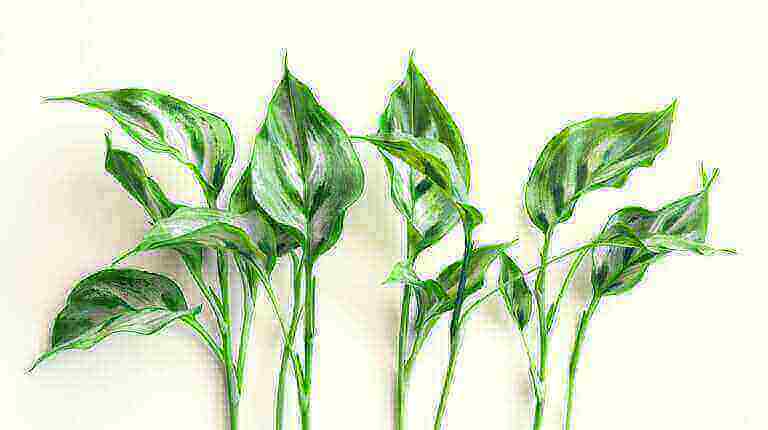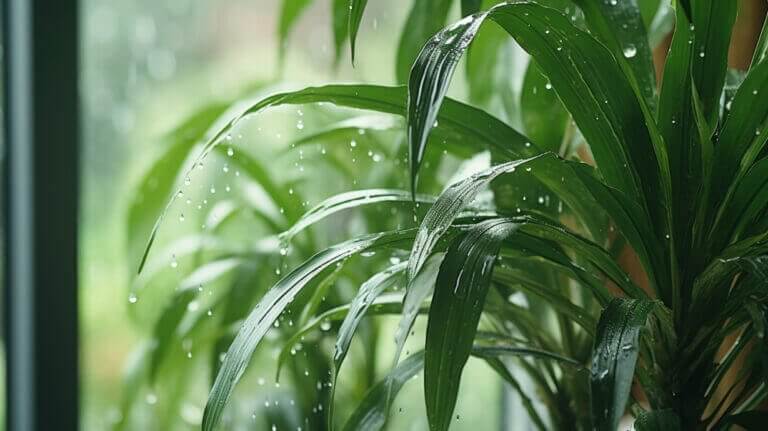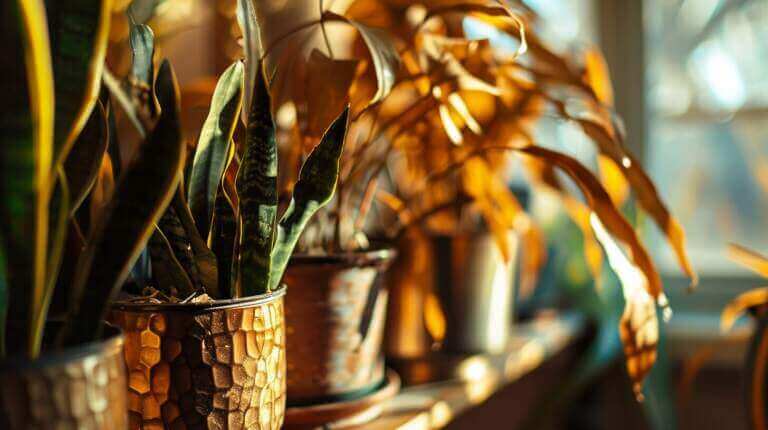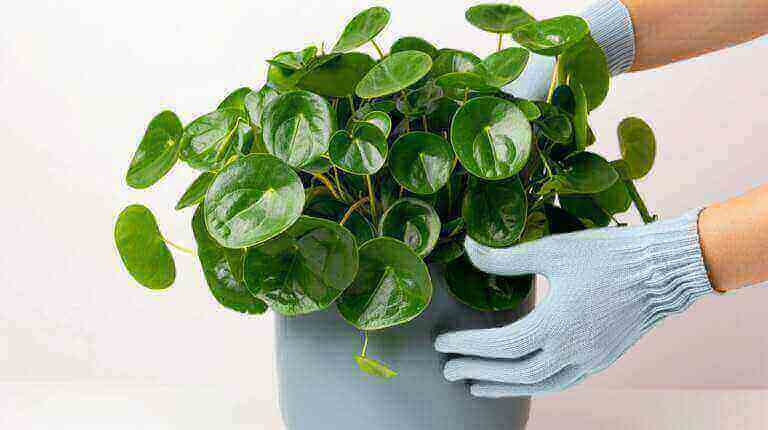How to Revive a Dying Fiddle Leaf Fig Tree? Emergency Care Tips
Reviving a dying fiddle leaf fig tree is possible with proper care. In this article, I will share techniques and tips to help you save your beloved fiddle leaf fig tree. Let’s dive in!
Key Takeaways:
- Reviving a dying fiddle leaf fig is achievable with the right care.
- Pruning dead leaves and stems can encourage new growth.
- Using premium potting soil and addressing root rot are essential for revival.
- Protecting the leaves with a houseplant leaf armor can boost the plant’s health.
- Joining a fiddle leaf fig community can provide support and guidance during the revival process.
Assessing the Health of Your Fiddle Leaf Fig Tree(Ficus Lyrata)
Regularly assessing the health of your fiddle leaf fig is essential to determine if it is dying and needs revival. Several signs can indicate the declining health of your plant, such as brown spots, dropping leaves, and lack of growth. To assess the situation, closely examine the leaves for any discoloration, spotting, or wilting. Observe any changes in the overall appearance and behavior of the plant. It’s important to note that while these signs may indicate a dying fiddle leaf fig, they don’t necessarily mean it’s beyond saving.
When assessing your fiddle leaf fig, consider the time, effort, and investment required for revival. Reviving a dying plant can be a challenging and resource-intensive process. Evaluate whether it’s worth dedicating the necessary care and resources to bring your fiddle leaf fig back to health. It’s also important to assess the space available for the plant’s growth, as a healthier, revived fiddle leaf fig may require more room.
To save a fiddle leaf fig on the brink of death, several interventions can be employed. Repotting the plant in fresh, well-draining soil can help address any drainage issues that may contribute to its declining health. Determining the right lighting conditions for your fiddle leaf fig is crucial, as insufficient or excessive light can impact its growth. By providing bright, indirect light, you can create an optimal environment for your plant’s recovery. Additionally, addressing root rot, a common issue in fiddle leaf figs, can be done with the help of a root supplement.
| Signs of a Dying Fiddle Leaf Fig | Possible Solutions |
|---|---|
| Brown spots on leaves | – Adjust lighting conditions – Address root rot issues |
| Dropping leaves | – Evaluate watering practices – Provide optimal humidity levels |
| Lack of growth | – Determine appropriate lighting – Assess soil quality and nutrients |
Assessing the health of your fiddle leaf fig is crucial in determining whether it requires revival and if it’s worth the effort. By closely observing signs of decline and considering the resources needed, you can make an informed decision on how to proceed. With the right interventions, such as repotting, addressing root rot, and optimizing lighting conditions, you can revive your dying fiddle leaf fig and bring it back to vibrant health.
Understanding Fiddle Leaf Fig Indoor Houseplant Issues and Solutions
When it comes to fiddle leaf figs, leaf issues can be a common occurrence. Understanding the causes behind these leaf problems is crucial in effectively reviving your fiddle leaf fig. Two common leaf issues to watch out for are yellow leaves and red spots.
Yellow Leaves
Yellow leaves on a fiddle leaf fig are often a sign of acidic soil or nutrient deficiency. To address this issue, it is recommended to test the soil acidity using a 3-in-1 soil meter. This will give you a clear understanding of the pH level and allow you to take appropriate action. Additionally, using a fiddle leaf fig plant food specifically formulated for the tree’s needs can help provide the necessary nutrients and revive the yellow leaves.
Red Spots
Red spots, also known as edema, can appear on fiddle leaf fig leaves. They are a response to overwatering and usually disappear as the leaves grow. While these spots may be alarming, they are generally not a cause for concern. However, it is important to monitor the watering consistency and ensure the plant is not sitting in excess water. Providing proper lighting and using seaweed liquid can aid in the revival of a fiddle leaf fig experiencing red spots.
By understanding these leaf issues and their solutions, you can effectively revive your fiddle leaf fig and ensure its continued health and growth. Remember to regularly assess the health of your plant and make adjustments to your care routine as needed.
| Leaf Issue | Possible Causes | Solutions |
|---|---|---|
| Yellow Leaves | Acidic soil, nutrient deficiency | – Test soil acidity with a 3-in-1 soil meter – Use fiddle leaf fig plant food – Adjust watering and fertilizing routine |
| Red Spots (Edema) | Overwatering | – Adjust watering consistency – Provide proper lighting – Use seaweed liquid |
Taking Action to Revive Your Fiddle Leaf Fig
Reviving a dying fiddle leaf fig requires proactive measures and dedicated care. By taking action and following these steps, you can increase the chances of saving your beloved plant.
Addressing Root Rot
Root rot is a common issue that can contribute to the decline of a fiddle leaf fig. To combat this problem, it’s essential to ensure proper watering techniques. Overwatering is a leading cause of root rot, so be mindful of the moisture levels in the soil. Allow the top inch of the soil to dry out before watering again. Additionally, consider using a root supplement, such as a root stimulator or a beneficial mycorrhizal fungi treatment, to help promote healthy root development and combat root rot.
Providing Bright, Indirect Light
Fiddle leaf figs thrive in bright, indirect light. Find a well-lit spot in your home where the plant can receive adequate sunlight without direct exposure to harsh rays. If needed, consider using sheer curtains or blinds to filter the light. Monitor the plant’s response to the light conditions and make adjustments as necessary. Remember, too little light can result in stunted growth, while too much direct sunlight can cause leaf burn.
Regular Monitoring and Adjustments
Reviving a fiddle leaf fig requires consistent monitoring and adjustments to its care routine. Keep an eye on the plant’s overall health, including the condition of its leaves, stems, and roots. If you notice any signs of decline, such as yellowing leaves or wilting, take prompt action. Adjust the watering schedule, lighting conditions, or nutrient regimen accordingly. Remain patient, as it may take time for the plant to recover and show signs of improvement.
Joining a fiddle leaf fig community or seeking expert advice can also provide valuable support and guidance during the revival process. Others who have experienced similar challenges can share their insights and offer solutions based on their own successes. Remember, reviving a dying fiddle leaf fig requires patience, dedication, and a willingness to adapt care practices based on the specific needs of your plant.
The Importance of Proper Care for a Healthy Fiddle Leaf Fig
Proper care is crucial for maintaining a healthy fiddle leaf fig. By providing the right conditions and consistent attention, you can ensure your plant thrives and continues to bring beauty to your home. Here are some essential care tips for a healthy fiddle leaf fig:
1. Premium Potting Soil
Using high-quality potting soil specifically formulated for indoor plants is essential. It provides the necessary nutrients and drainage to support the fiddle leaf fig’s growth. Avoid using garden soil as it may not have the right texture and can lead to root rot.
2. Appropriate Lighting
Fiddle leaf figs thrive in bright, indirect light. Place your plant near a window where it can receive plenty of natural light, but avoid direct sunlight, as it can scorch the leaves. If your space doesn’t have access to sufficient natural light, consider using a grow light to supplement the plant’s needs.
3. Regular Soil Moisture Testing
Testing the moisture level of the soil regularly is crucial to prevent overwatering or underwatering. Use a soil moisture meter or simply stick your finger into the soil to assess its dryness. Fiddle leaf figs prefer slightly moist soil, so water the plant when the top inch of soil feels dry.
4. Fertilize and Feed
To support the fiddle leaf fig’s growth and overall health, regularly fertilize it with a specific plant food formulated for fiddle leaf figs. Follow the instructions on the product label for the application frequency and amount. Additionally, consider using a seaweed liquid fertilizer to provide extra nutrients.
By following these care essentials, you can ensure that your fiddle leaf fig remains healthy and vibrant. Remember to monitor the plant’s condition regularly and make adjustments to its care as needed. With proper care, your fiddle leaf fig can continue to be a beautiful addition to your home for years to come.
FAQ
How do I revive a dead fiddle leaf fig tree?
First, assess the extent of the damage – if the trunk is still intact, there is a chance to revive it. Prune away any dead branches and leaves, and ensure the plant is getting the right amount of light and water.
Can a fiddle leaf fig survive indoors?
Yes, fiddle leaf figs can thrive indoors, but they need plenty of bright, indirect light to flourish. Place them near a sunny window, but out of direct sunlight.
My fiddle leaf fig has drooping leaves. What should I do?
Check the soil for dryness, ensure the plant is receiving enough light, and adjust your watering schedule. Wilted leaves can be a sign of overwatering or underwatering.
Should I prune my fiddle leaf fig?
Yes, pruning encourages new growth and helps the plant maintain a desirable shape. Use a pair of pruning shears to trim any leggy or dead branches.
How can I encourage new leaf growth on my fiddle leaf fig?
Provide your plant with adequate light, proper watering, and a regular feeding schedule. Gently clean the leaves to ensure they can fully absorb sunlight.
How can I acclimatize a new fiddle leaf fig to my home?
Gradually introduce the plant to its new environment by placing it in a spot with indirect light for a few hours a day. Over the course of a week, increase the time it spends in its permanent location.







